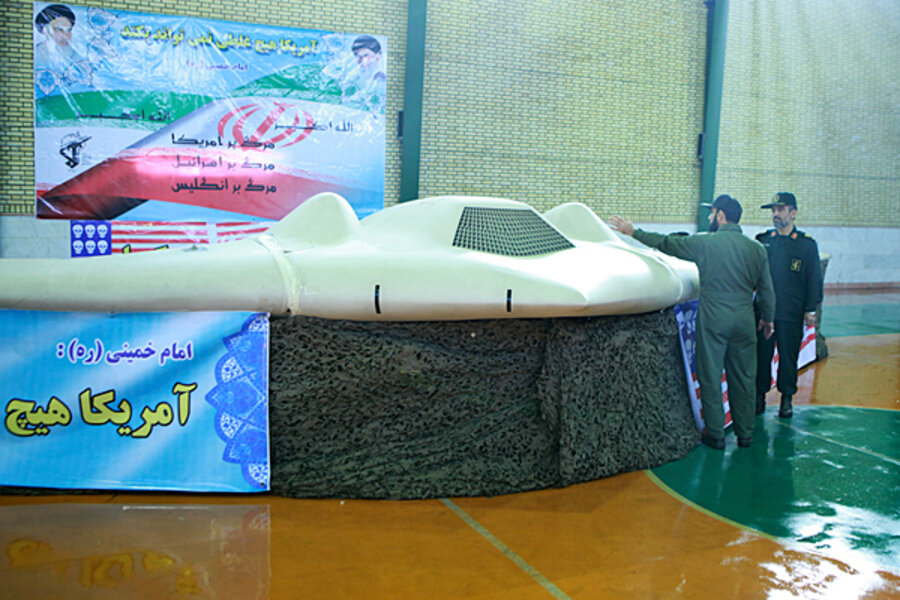Iran's keeping the US drone. But can they figure it out? (VIDEO)
Loading...
Iran appears to have declined the White House's formal request to return the surveillance drone it recently captured. But even if Iran retains the high-tech drone, experts are dubious about how much Iran can learn from it.
The semi-official Iran Students' News Agency reported today that Iran considers the RQ-170 "Beast of Kandahar" drone "Iran's property," according to Iranian Foreign Minister Gen. Ahmad Vahidi. "The US spy drone is the Islamic Republic of Iran's possession and our country will decide what to do in this regard," he said.
Vahidi also criticized the US for the "bullying way" that it "called for return of the drone instead of offering apology to the Iranian and Afghan nations for misusing their lands."
President Obama confirmed yesterday that the White House had requested that Iran return the spy drone, reports the Associated Press. "We have asked for it back," he said during a Monday news conference with Iraqi Prime Minister Nouri Al-Maliki. "We’ll see how the Iranians respond."
But even with Iran apparently intent on holding onto the drone, experts say that while there are reasons for concern, it is dubious that Iran will be able to glean the drone's secrets.
[ Video is no longer available. ]
"From a secrecy standpoint, it's like dropping a Ferrari into an ox-cart technology culture," Richard Aboulafia of aerospace analysts Teal Group told DefenseNews.com. Rather, he says, the risk is that Iran will sell the drone wreckage to a third party. "I'm sure they can sell it to someone who can get some kind of information out of it."
DefenseNews also notes that "there are few examples of countries that gained a strategic edge simply by capturing an enemy platform." The Soviets, for example, developed its jet-engine program by copying Western technology, but never equaled or overtook the West in the aerospace field.
Former Vice President Dick Cheney said that the US should have destroyed the downed drone immediately. But the fact that the Obama administration did not suggests that it is not as worried as Cheney about US technology being uncovered, military-technology expert Peter W. Singer of the Brookings Institution told Time Magazine.
But Mr. Singer warns that while Iran may not have the skill to decipher the drone's secrets, China might, and is better position to make use of those secrets.
“The Chinese are a generation behind in that part kind of technology, and if they got a working or damaged model of that technology, it’s not good for us,” says [Singer]. “It’s not easy to reverse engineer – so much of it turns on software – but it is a heck of a lot easier to build it when you have the model up close to study it.”
Singer further expounds on the concerns in an article on the Brookings website.
Our loss here is not so much the basic design of a stealthy airplane, which all know the essentials of (bat wing, no tail, etc). Rather it, is component aspects like the materials, even down to the coatings, internal avionics, how it deals with heat signature, etc. The Chinese for example, are behind us in even basic things like high performance jet engines. But most important are the sensors the plane carried. This is the jewel for them now. Note, the bottom of the plane was shielded in the photos released by Iran so we don’t know what was carried or what was damaged and how much. It depends on what was on the plane on this mission....
But two drone designers, speaking to Wired on condition of anonymity, said that even if Iranian or Chinese engineers decipher the components and sensors, they'll still have to figure out how to make them. “Someone will figure out the [materials'] composition,” one of the designers said, “but producing them is entirely a different matter.”
And the other designer notes: “Even if [the radar] showed up completely intact, they may not know how to use it because they don’t know how to use the software” which likely contains anti-tamper measures of its own.





